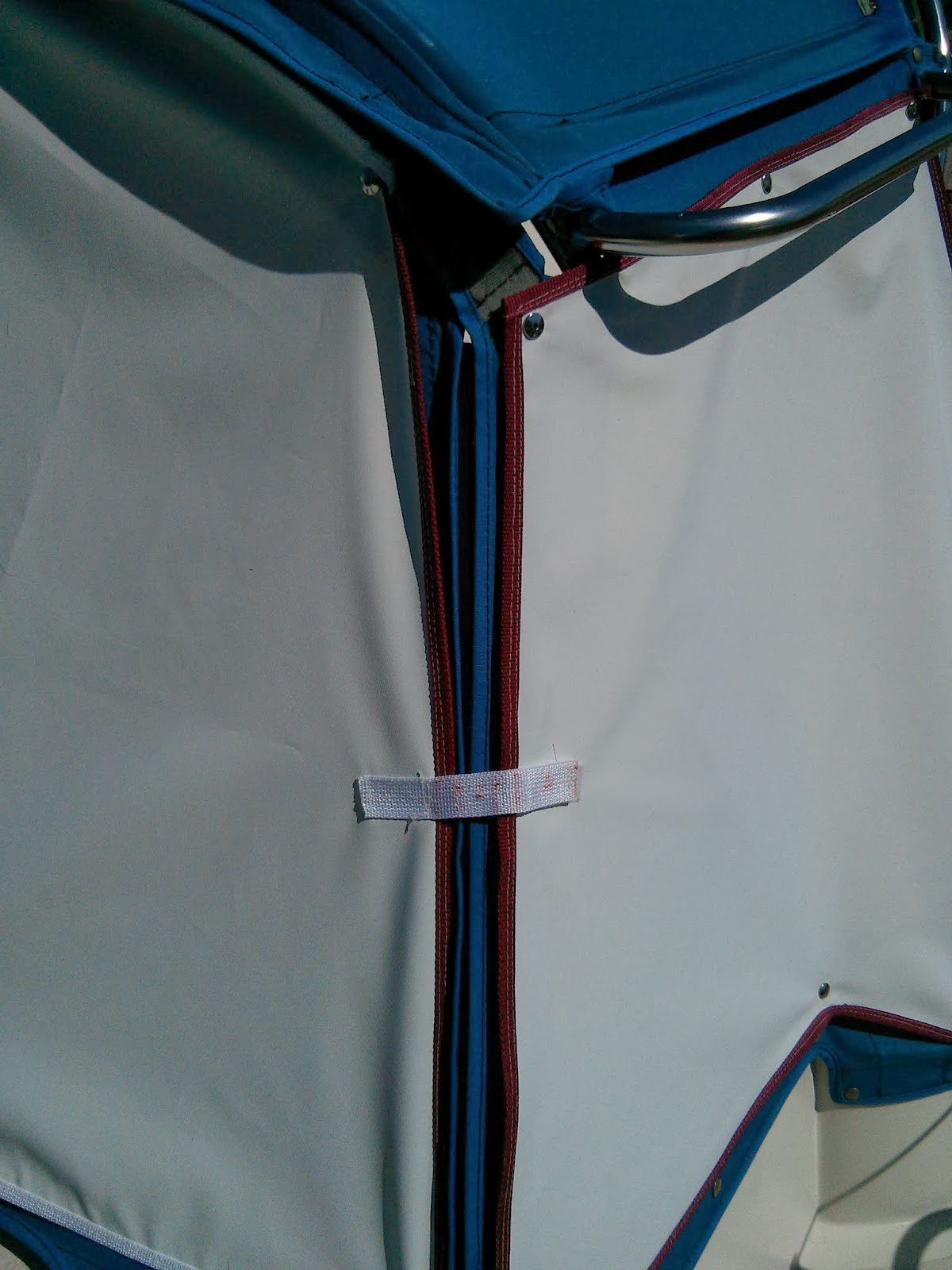Two previous posts March 6th – What A Grind & March 13th – Interior
Tabbing Progress Report, precede this update.
Over the past week most of our efforts and progress continue
to be in the head area.
I created a ¾” plywood floor for the area under the sink /
over the mast bucket and stringers.
 |
| Test fitting the 3/4" plywood floor. |
The plywood is bonded to the mast bucket, the ¾” mast bucket
brace and the 2x4 floor stringer with thickened epoxy. To assist with the bond, ¼” wood screws
attach the plywood to the mast bucket and the 2X4 floor stringer. While the assembly was still wet, I added
fiberglass tabbing between the underside of the plywood and all the surrounding
vertical members.
Once the underside of the assembly had cured, Anne & I
worked together to apply heavy 1708 cloth between the topside of the plywood
and all the surrounding vertical surfaces.
 |
| Tabbing extended to all the surrounding vertical surfaces above and below. |
The resulting structure will add significant strength to the
area and additional support for the head pan.
Structurally our repairs to this area are complete. Next up for the area under the head counter
are new through hull fittings and supports for the holding tank. Future progress in the head can be found in
our Head
Refit photo album.
Just outside of the head, under the cabin sole are ongoing
repairs to support the beam below the head door. The support beam runs bow to stern along the
midline of the vessel. This is another
area on our M382 in which the Morgan recall team completed a faulty repair
job. The team failed to properly prep
the hull and wood brace prior to applying the fiberglass. The result was tabbing that sheared away from
the support beam.
 |
| Tabbing added by the Morgan recall team sheared away from the head pan support beam below the head door. Note the two wood screws (dots to left and right) added by previous owner. |
A previous owner attempted to remedy this issue and prevent
the head pan from sinking by inserting screws through the breakaway tabbing and
into the wooden cross brace. Rather than
attempt re-bond the existing fiberglass, I chose to cut away the tabbing and
create a solid base to support the beam from below.
 |
| The detached fiberglass removed to expose a 3" thick laminated plywood support beam. |
I removed the old fiberglass with a cut off wheel on a 4”
angle grinder and then ground down the entire area to bare fiberglass. My solution to supporting the cross brace
required filling in the valley between the vertical support and the hull. To provide drainage the initial layer of fill
included a ¾” PVC tube set in thickened epoxy.
Next multiple layers of FRP blocks were set in thickened epoxy.
 |
| Initial layer included a 3/4" PVC drain pipe set in thickened epoxy |
 |
| 1/2" green FRP Blocks set in thickened epoxy used to build up a solid base to support the cross brace. I secured the forward end with a new layer of 1708 mat. |
Using ½” thick FRP blocks saved time by allowing me to fill
the area without worrying about excessive heat buildup from curing thick
applications of epoxy.
 |
| Solid base for supporting brace aft (left) and tabbing forward (right) complete |
The top layer of FRP, green panel on left above, was set atop a large piece to 1708 mat that
extended from the midline of Pilgrim to far under the starboard sole. The mat should serve to bond the entire assembly
to the hull. The top piece of FRP
extends under the full width of the cross brace. A 1/8” gap remains between my assembly and
the head pan support beam above.
 |
| 1/8" to 3/16" gap for shim(s) |
My plan is to epoxy a 1/8” to 3/16” shim into this gap and
then add tabbing between the cross brace and the hull. Hopefully we can finish up work in this area
over the next week.
Moving aft in Pilgrim’s cabin, the pilot berth’s new partial
bulkheads received oak cleats.
 |
| Oak cleats added to top of new pilot berth bulkheads. |
The cleats are set in thickened epoxy and through bolted to
the ¾” plywood bulkheads. The cleats
will provide a substantial base to which the pilot berth deck can be attached.
Additional images of pilot berth project can be found in our Pilot Berth Rebuild photo album.
On the opposite side of the cabin, the partial bulkheads
under the forward galley counter top received tabbing. The Morgan factory only tabbed the bulkheads to
the hull in sections not along their full length. We added 1708 mat to the sections lacking
tabbing.
 |
| Upper section of partial bulkheads under galley countertop |
 |
| Lower section of partial bulkheads under galley countertop / sinks |
Now the bulkheads are tabbed to the hull along their full
length. Like the head area, the galley
tabbing repairs are complete. Once the
new through hull fitting for the sink
drain is installed then we can move on to priming and painting the area. Additional photos and future progress in the galley can be viewed in our Galley Refit Photo Album.



































